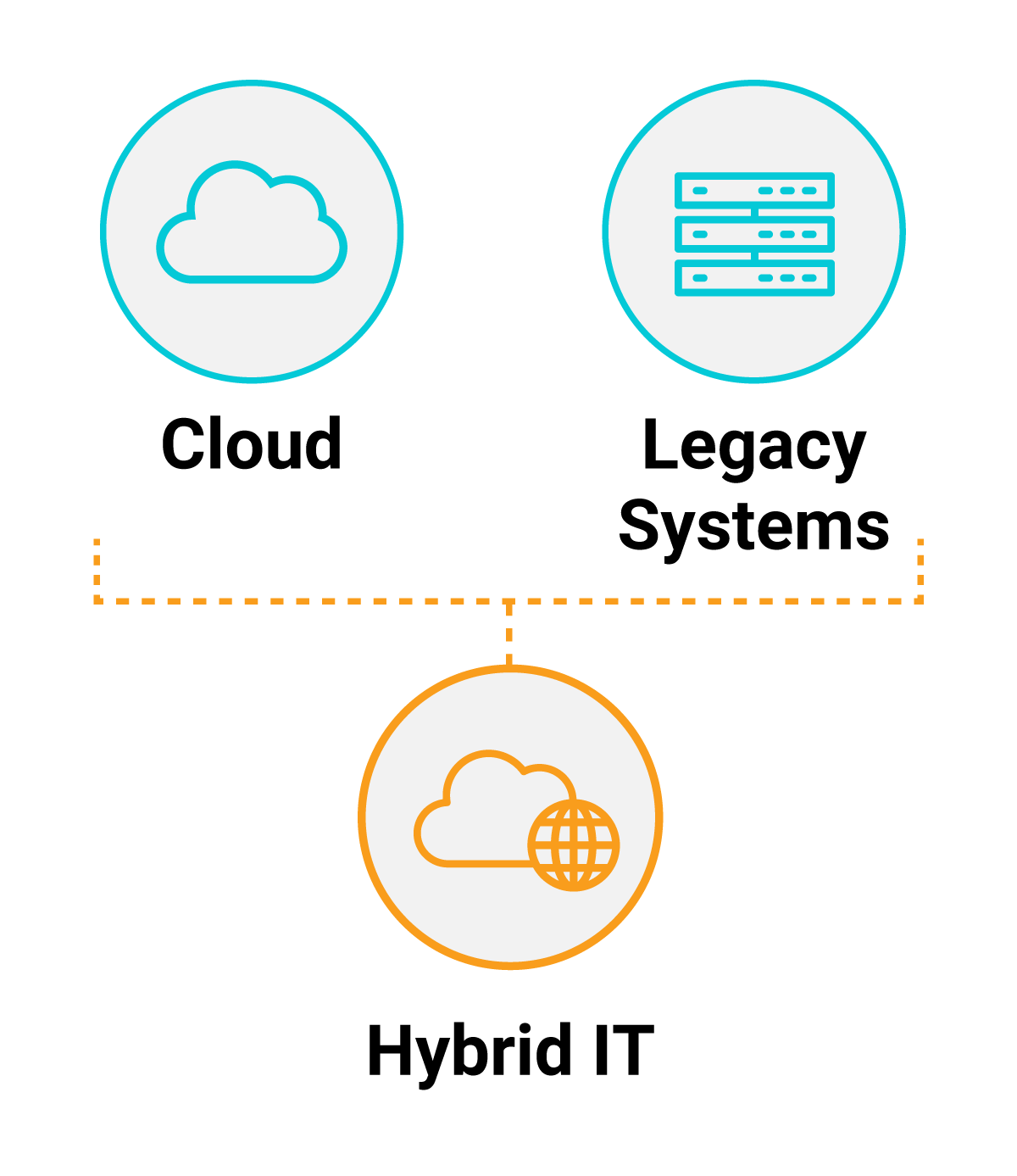Despite all the attention cloud systems and enterprise cloud migrations receive, legacy software still plays an active role throughout enterprises. In many cases, critical business processes supported by legacy applications are just too crucial to core business functionality to risk migration.
While the pandemic accelerated cloud adoption for many enterprises, many now operate with hybrid functionality with resources located in private/public cloud providers and their own on-premises data centers. In fact, according to the
2020 SolarWinds® IT Trends report, 74% of respondents choose to manage their hybrid IT environments in-house or with a managed service provider (MSP) in contrast to multi-cloud environments, with only 10% choosing to manage in-house or 13% with an MSP.
Enterprises can better determine whether the migration effort, cost savings, and flexibility offered by the cloud should be part of their
digital transformation strategy by analyzing the pros and cons of migrating to the cloud against the benefits of using legacy systems for each component in their infrastructure.
What Are Legacy Systems?
Legacy systems encompass all manner of technology in organizations. Legacy systems can include mainframes from IBM or UNIX machines from Sun—which may not have analogous systems in the cloud computing platforms—or older operating systems like Windows XP, which may not be supported in the cloud.
An example I personally experienced was the billing system at a large telecom provider. All manner of APIs were written to attempt to modernize the codebase and build compatibility with modern systems, but the risk of migrating to newer systems (when a system affects the bottom line of the company, it’s critical) outweighed the benefits of moving to newer systems and wasn’t a risk the CIO was willing to take.
A billing system is a classic example, but other examples regularly surface and serve to further highlight the continued importance of legacy systems across organizations. This includes the recent
increased demand for COBOL programmers to perform software development tasks on legacy systems responsible for critical tasks like running the unemployment insurance programs for individual states.
Why Are Legacy Systems Still Used? Legacy Tech Benefits
People still use legacy systems because they work and run critical day-to-day operations for enterprises. Organizations may also choose to keep legacy systems because there’s a high level of customization specific to the business in the codebase.
These systems still meet the needs of the business, and this fact alone often outweighs the costs of moving toward newer technology. A legacy system’s modernization effort can require a great deal of effort. For instance, developers need to understand data formats (which connect to any number of downstream systems). Also, like the COBOL example, the software may be written in older programming languages. This means any source code needs to be analyzed and rewritten from the ground up. Building new software is complex and can be a multi-year project with a high cost due to the timing and the sheer number of software developers needed.
To solve this, some believe the answer is to completely replace heavily customized, older legacy technology with a cloud solution. This approach may initially seem to provide lower costs,
cloud migration can come with another
set of challenges. When migrating, organizations must put together extensive project plans offering some base level of functionality while at the same time incorporating and optimizing critical business rules and migrating essential data. If the migration plans aren’t executed properly, business operations, service availability, and the bottom line can suffer.
What Should You Migrate to the Cloud? Cloud Migration Benefits
Although IT pros know the value hybrid IT can add to the business, a central question remains: what infrastructure makes the most sense to migrate to the cloud?
For example, some legacy systems may be easier to move—like migrating email from on-premises to a well-supported platform like Microsoft Office 365—and can quickly reduce operating costs. However, attempting to migrate more complex and outdated the legacy systems can lead to bigger migration challenges.
Another benefit of having some of your infrastructure located in the cloud is the nearly unlimited scale with minimal lead time. You can deploy petabytes of storage with a couple of clicks or a single line of code.
Migrating to the cloud benefits organizations by providing flexibility around deployment, as most modern systems can be easily moved into infrastructure as a service (IaaS) operations in the cloud (although there are differences in the way storage and networks are built).

A Hybrid IT Digital Transformation Strategy Combines the Benefits of Legacy Systems and Cloud
The IT world still has a high number of legacy systems because they simply work and continue to support mission-critical business functions. By combing the benefits of legacy systems and cloud infrastructures, following a
hybrid IT strategy may make sense for many organizations.
With the continued trend toward adopting hybrid IT, organizations need centralized visibility into infrastructures located across on-premises, hybrid, and cloud environments. Learn more about how
SolarWinds Observability Self-Hosted (formerly known as Hybrid Cloud Observability) can provide a holistic and deep view of hybrid and cloud IT infrastructure and services.





